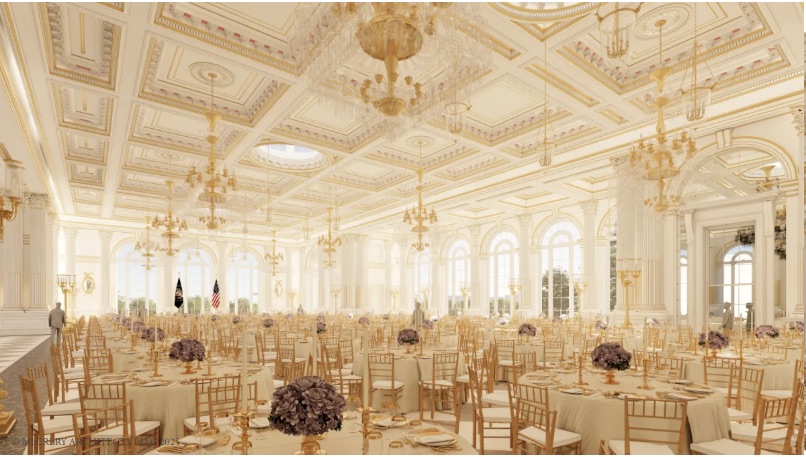A monumental construction project is set to commence on the East Wing of the White House, marking the beginning of a 90,000-square-foot ballroom, a long-cherished ambition of former President Donald Trump. This ambitious endeavor, estimated at a staggering $200 million, signifies a notable transformation of the historic presidential residence, aiming to provide an enhanced venue for official functions and state events.
Funding for this significant undertaking will be primarily sourced from Donald Trump himself and various private donors, underscoring a unique private-public partnership for a federal architectural project. White House Press Secretary Karoline Leavitt confirmed that construction is slated to begin in September, with an anticipated completion well before the conclusion of President Trump’s potential next term, ensuring its readiness for future presidential activities.
This planned ballroom represents one of the most substantial modifications to the public areas within the White House complex since extensive renovations in the late 1940s, which involved a structural overhaul of the Executive Mansion. Its scale and purpose are set to redefine how presidential entertainment and official gatherings are hosted, reflecting a shift in the practical needs and grand aspirations of the presidency.
Currently, significant events such as concerts and state dinners are frequently accommodated in the East Room or within large outdoor tents, spaces that present limitations in capacity and versatility. The proposed new ballroom, however, is designed to host approximately 650 guests, a considerable increase compared to the East Room’s capacity of 200, promising a more expansive and adaptable environment for high-profile events at the White House.
The White House has lauded the new space as “a much-needed and exquisite addition,” emphasizing its meticulously designed and crafted nature. McCrery Architects, appointed as the lead firm for this presidential project, has articulated a commitment to preserving the classical elegance and historical importance of the White House’s existing design, while incorporating elements such as arched windows and extensive gold ornamentation, a stylistic preference notably favored by Donald Trump in his past White House redesigns, including parts of the Oval Office.
The construction will necessitate the temporary relocation of the First Lady’s offices, currently housed within the East Wing, which was originally constructed in 1902 and expanded in 1942. This project adds to a series of modifications made by Donald Trump during his tenure, including the paving of a grassy area adjacent to the Rose Garden for outdoor entertaining and the installation of two prominent flagpoles on the complex’s north and south ends, collectively shaping his presidential legacy on the iconic property.
Interestingly, the concept of a grand ballroom was not a new idea for Donald Trump; he had previously extended an offer to officials within the Obama administration to privately fund and construct a similar facility when he was a private citizen. However, that proposal did not materialize, making the current project a realization of a long-held personal vision for the executive residence.
Extensive planning for this ambitious overhaul involved collaborative meetings between White House staff, the National Park Service, the White House Military Office, and the United States Secret Service, ensuring that all logistical, security, and preservation aspects were thoroughly considered. This collaborative effort underlines the complexity and multifaceted considerations inherent in any significant architectural intervention on such a historically significant site.
Despite the official endorsement and meticulous planning, the project has garnered public attention, with some critics raising concerns over the substantial $200 million price tag and the aesthetic choices, particularly the gold ornamentation, which some perceive as a departure from traditional White House decor. These discussions reflect broader debates surrounding presidential spending and the stylistic imprints left by administrations on national landmarks, adding another layer to the narrative of this White House ballroom.






Leave a Reply